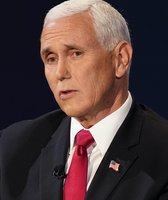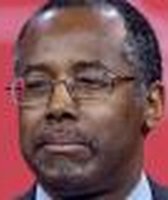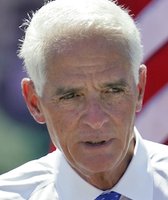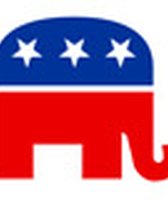Stand up for the facts!
Our only agenda is to publish the truth so you can be an informed participant in democracy.
We need your help.
I would like to contribute
With high-profile support from President Barack Obama, Congress is preparing a major overhaul of the nation's health care system. The details have yet to be revealed, but that hasn't stopped critics in Congress from going on the attack.
We'll examine three of their claims now and will be keeping an eye on the arguments on both sides as the debate unfolds.
Obama and the Democratic leadership have proposed broad outlines for the overhaul. The centerpiece of their plan remains the employer-based system, where most people have private health insurance through work. To rein in costs, the government would invest in electronic medical records and encourage efficiency and preventive care.
To get coverage for people who don't have health insurance, the plan would increase eligibility for the poor and children to enroll in initiatives like Medicaid and the State Children’s Health Insurance Program. Finally, the plans seek to create a health insurance exchange, where individuals and small businesses can easily comparison shop for insurance coverage. One of the exchange plans would be a public option run by the government.
It's the public option that has fueled Republican attacks, leading to charges that it would destroy the private system, that millions would lose their current coverage, and that Democrats don't have a way to pay for it. Here's our examination of those three charges.
McConnell on the private sector
Senate Republican leader Mitch McConnell of Kentucky said on Fox News Sunday that a public option would destroy the private insurance system.
It "would mean a government plan that would inevitably put the government between you and your doctor, and there would be no more private insurance," McConnell said.
Asked why by interviewer Chris Wallace, McConnell said, "Because the private insurance people will not be able to compete with a government option."
McConnell is incorrect — the Democratic plan does not intend to do away with private insurance. His statement that private insurance "will not be able to compete with a government option" is challenged by nonpartisan health care experts who disagree.
McConnell's view is that if the government offers a cheaper, public plan, people will dump their private insurance to get lower health care premiums. Over time, this would errode the private health care system. In theory, it makes sense that people would want the health plan that saves them the most money, and experts do say some private insurance companies might struggle to survive against a government competitor. In practice, however, researchers don't believe public options would destroy the private insurance industry.
"Every time I hear these claims I'm astonished," said Cathy Schoen, senior vice president for the Commonwealth Fund, a foundation that studies health care and advocates more coverage for the uninsured, minorities and people with low incomes. She said a public plan could pressure private insurers to lower premiums or negotiate better rates with hospitals, but it would not put private companies out of business.
"The public plan could get a reputation of not being good. The private plans could say, 'Let's change our behavior so we don't lose business,'" Schoen said.
Another nonpartisan research group, the Urban Institute, reached similar conclusions.
"Private plans would not disappear. Private plans that offer better services and greater access to providers, even at somewhat higher costs than the public plans, would survive the competition in this environment," wrote John Holahan and Linda Blumberg of the Urban Institute's Health Policy Center.
One of the problems right now is that private insurance is not as competitive as you might think. Both the Commonwealth Fund and the Urban Insitute have noted that most health care markets are dominated by a small number of big insurers.
"The increased concentration has made it difficult for the nation to reap the benefits usually associated with competitive markets," Holahan and Blumberg wrote.
Not that a public option will solve all problems. They concluded that a public plan is not sufficient to control growing health care costs, and that other cost-containment strategies would be necessary.
Finally, we should point out that it remains to be seen how the Democratic plan will deal with the public option, which could be structured in several different ways.
McConnell flatly states that the public option would run private plans out business because they "will not be able to compete with a government option." Even though we have limited details on how the plan would be implemented, there is enough in the administration proposal to conclude that McConnell's worst-case scenario is unlikely. That brings us to Barely True.
120 million "deprived" of health care?
Rep. Mike Pence of Indiana has taken the public option and pushed it further. He described the Democratic health care plan as "a government-controlled health care plan that will deprive roughly 120 million Americans of their current health care coverage and lead to federal bureaucrats denying critical care for patients."
That "120 million" number jumped out at us. That's a big number, representing roughly three-quarters of those who now have employer-provided health insurance.
We asked Pence's staff about the number, and they referred us to a report from the Lewin Group, a health care consulting firm. The report ran a number of scenarios, including what would happen if the government offered a Medicare-style plan open to everyone. Their model found that 118 million people would choose to drop their private coverage in favor of cheaper public coverage.
But there's a hitch: That's what the Lewin Group believed would happen under the plans that were the most like Medicare, and if everyone were allowed to enroll. As we noted before, it's possible to set up a public option where only some people are allowed to enroll. Under the Lewin Group's estimates, if you restrict a Medicare-style public option only to individuals and small businesses, only 32 million would leave private coverage. And if the public option is less like Medicare and competes like a private insurer, the number drops even further.
We'll grant that Congress could come up with a Medicare-style plan and open it to everyone, but it doesn't seem likely. Pence appears to be picking the worst number he can choose. And he doesn't mention the fact that under the scenario laid out by the Lewin Group, people would still have health care coverage and their premiums reduced by 30 to 40 percent. He says the government would "deprive" people of health insurance, when actually the scenario is that they would choose a different option.
Even if you believe that an expansive government health care plan would drive private insurers out of business, that still doesn't account for Pence's "deprive" claim, because the Lewin report he cites is focused on people who have chosen the government plan, not people who were left to the government plan after private options disappeared.
Finally, we have to include a caveat about the Lewin Group. The group says it operates with editorial independence, but it is a subsidiary of UnitedHealth Group, which also offers private health insurance.
Given all this background and explanation, we rated Pence's statement that the government would "deprive" 120 million people of their "current health care coverage" False.
How much will it cost?
Republicans on the attack against health care are on far firmer ground when they talk about how much money it will cost.
Rep. Roy Blunt of Missouri said Democrats haven't come up with a way to pay for their ambitious health plan.
"We agree that reform is needed, but Democrats have failed to answer the most basic question of how they want to pay for the more than $1 trillion of health care spending they’re advocating," Blunt said.
It's not clear how much the health care plan will cost. During the presidential campaign, Obama estimated his plan could cost $50 billion to $65 billion a year. That could come to $1 trillion over about 15 to 20 years. But independent sources that favor a health care overhaul put the expense much higher, at about $150 billion a year. That comes to $1.5 trillion over 10 years.
Blunt says that "Democrats have failed to answer the most basic question" of how they want to pay for health care. But Obama has put forward some relatively concrete proposals. His current budget includes a $635 billion fund for health care that includes savings from greater efficiencies and changing the tax code so the wealthy don't get as much in deductions. It's not clear if Congress will go along with the tax changes, though, and analysts have questioned whether the savings will be as great as Obama says.
Democrats in Congress are still debating how they want to pay for health care. Sen. Max Baucus of Montana of held a hearing on May 12, 2009, to discuss ways of financing health care, and senators during the hearing expressed a great deal of skepticism about new taxation strategies. After Blunt made his comments, Baucus put forward a policy paper that included several ways to potentially pay for heath care, including modifying tax exemptions on employer-provided insurance and taxing alcohol and soda.
Len Berman of the nonpartisan Tax Policy Center, who testified during the hearing, said later Congress seems unsure how it will pay for health care. He wrote in a blog post that they seemed to be in the grip of "magical thinking."
"If there was the easy answer they'd have figured it out already," Berman told PolitiFact. "The idea of a new federal tax terrifies legislators. ... If they're serious, and it's not going to be smoke and mirrors, then they're going to have to make decisions that they haven't been willing to make so far."
So Blunt is largely correct that that Democrats "have failed to answer" how to pay for health care. But they are putting forward ideas, and the Obama administration has identified $635 billion — perhaps optimistically — to get a plan started. So we rate Blunt's statement Mostly True.
Our Sources
White House Office of Management and Budget, Update Budget Summary Tables , May 2009
White House Office of Management and Budget, The Health Care Reserve Fund: A Historic Commitment to Reform , May 9, 2009
The Lewin Group, Opening a Buy-In to a Public Plan: Implications for Premiums, Coverage and Provider Reimbursement , Dec. 5, 2008
The Kaiser Family Foundation and Health Research and Educational Trust, Health Benefits 2008 Annual Survey
U.S. Senate Finance Committee, Description of Policy Options Financing Comprehensive Health Care Reform: Proposed Health System Savings and Revenue Options , accessed May 19, 2009
U.S. Senate Finance Committee, Health Reform 2009 , (Democratic plan) Nov. 12, 2008
Health Affairs, " The Public-Plan Option: A Roundtable With Stuart Butler, Jacob Hacker, and Len Nichols ," April 30, 2009
The Lewin Group, " The Cost and Coverage Impacts of a Public Plan: Alternative Design Options ," April 6, 2009
GOP.gov, Blunt calls for bipartisan health care discussions , May 14, 2009
The New America Foundation, The Case for Health Care Reform , February 2009
The Urban Institute, Massachusetts Health Reform: Solving the Long-Run Cost Problem , January 2009
The Urban Institute, Can a Public Insurance Plan Increase Competition and Lower the Costs of Health Reform? , March 18, 2009
GOP.gov, Pence: Medicare and Social Security Report Shows Need for Real Reform , May 12, 2009
Interview with Cathy Schoen of the Commonwealth Fund
Interview with John Holohan of the Urban Institute
Interview with John Shiels of the Lewin Group
Interview with Len Burman of the Tax Policy Center















































